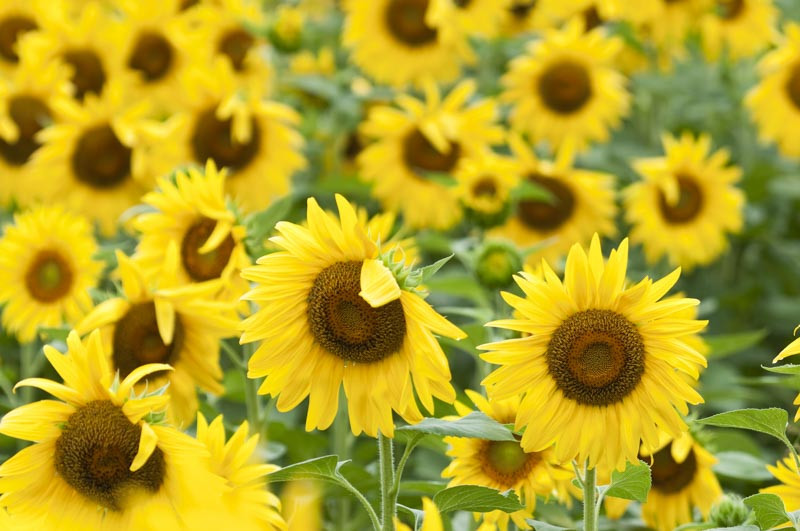Sunflower: Grow Your Own Striking Blooms for Beauty and Harvest
The sunflower, known scientifically as Helianthus annuus, is an iconic plant renowned for its large, vivid blooms and towering stems. These cheerful plants have become symbols of summer, happiness, and vitality.
Appearance: Characterized by their large, daisy-like flowers, sunflowers can reach impressive heights, with some varieties growing over 10 feet tall. The blooms, featuring a dark center surrounded by bright yellow petals, can be as large as a foot across in some types.
Growth and Care: Sunflowers are remarkably hardy and easy to grow from seed. They thrive in full sun, needing 6-8 hours of direct sunlight daily. These plants prefer well-drained, nutrient-rich soil and regular watering, especially during their growth phase. Master the art of growing and caring for Sunflowers.
Varieties: There are numerous varieties of sunflowers, ranging from towering giants to smaller, multi-branching types. Some popular varieties include the classic ‘Ring of Fire‘, the colorful ‘Autumn Beauty‘, and the dwarf ‘Teddy Bear‘.
Pollinators and Wildlife: Sunflowers are excellent for attracting bees, butterflies, and other pollinators. After blooming, their seed heads provide a valuable food source for birds, particularly in autumn and winter. Sunflowers are safe for pets.
Uses: People grow sunflowers not only for their ornamental value but also for their nutritious seeds, enjoyed by humans and wildlife alike. Additionally, manufacturers extract sunflower oil from these seeds for widespread use in cooking and cosmetics.
Companion Planting: sunflowers are excellent in the vegetable garden and are believed to help detoxify soil by absorbing harmful toxins.
Harvesting: Growers harvesting sunflower seeds should remove the heads when the back turns brown and the seeds become plump with black stripes.
Symbolism: Sunflowers symbolize adoration, loyalty, and longevity, largely due to their trait of turning their heads to follow the sun across the sky – a phenomenon known as heliotropism.

